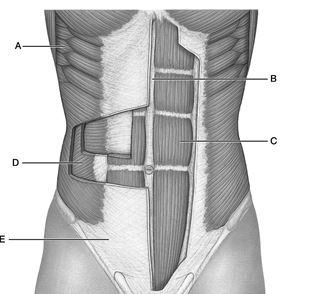A) A
B) B
C) C
D) D
E) E
Correct Answer

verified
Correct Answer
verified
Multiple Choice
A depression on the posterior of the knee
A) femoral triangle
B) posterior triangle
C) medial bicipital furrow
D) popliteal fossa
E) supracristal line
Correct Answer

verified
Correct Answer
verified
Multiple Choice
A synergist muscle can do all of the following except
A) add extra force to a movement.
B) hold a bone in place to create a stable base for the prime mover.
C) prevent inappropriate extra movements that might otherwise be produced.
D) reverse a particular movement caused by the prime mover.
Correct Answer

verified
Correct Answer
verified
Multiple Choice
This structure is located between the laryngeal prominence and the jugular notch of the manubrium.
A) anterior triangle
B) cricoid cartilage
C) epiglottis
D) infrahyoid muscles
Correct Answer

verified
Correct Answer
verified
Multiple Choice
 Figure 11.1
Use the diagram above to answer the following questions.
-Identify the letter that indicates the Aponeurosis of external oblique.
Figure 11.1
Use the diagram above to answer the following questions.
-Identify the letter that indicates the Aponeurosis of external oblique.
A) A
B) B
C) C
D) D
E) E
Correct Answer

verified
Correct Answer
verified
Multiple Choice
Which type of fascicle arrangement shortens the least?
A) bipennate
B) circular
C) fusiform
D) parallel
Correct Answer

verified
Correct Answer
verified
True/False
The hamstrings consist of the biceps femoris, the semitendinosus, and the semimembranosus.
Correct Answer

verified
Correct Answer
verified
True/False
Muscles of the pharyngeal arch muscle group include muscles of facial expression and chewing muscles.
Correct Answer

verified
Correct Answer
verified
Essay
The three extrinsic muscles of the tongue are ________.
Correct Answer

verified
geniogloss...View Answer
Show Answer
Correct Answer
verified
View Answer
Multiple Choice
 Figure 11.1
Use the diagram above to answer the following questions.
-Identify the letter that indicates the Internal oblique.
Figure 11.1
Use the diagram above to answer the following questions.
-Identify the letter that indicates the Internal oblique.
A) A
B) B
C) C
D) D
E) E
Correct Answer

verified
Correct Answer
verified
Multiple Choice
A muscle that originates on the lateral surfaces of the superior eight ribs is the
A) rectus abdominis.
B) subclavius.
C) serratus anterior.
D) subscapularis.
Correct Answer

verified
Correct Answer
verified
Short Answer
The ________ muscle is the prime mover of dorsiflexion.
Correct Answer

verified
Correct Answer
verified
Multiple Choice
Inability to raise the eyebrow could be associated with damage to the
A) mastoid process.
B) orbicularis oculi.
C) temporalis muscle.
D) frontal belly of the epicranius muscle.
Correct Answer

verified
Correct Answer
verified
Short Answer
The ________ is the longest muscle in the body, spanning two joints.
Correct Answer

verified
Correct Answer
verified
Multiple Choice
Which of the following statements concerning surface anatomy is False?
A) It studies internal organs as they relate to surface landmarks.
B) It serves as a basis for a standard physical examination.
C) It is best studied in cadavers.
D) It is used to take pulses, insert tubes, make surgical incisions, and perform other clinical procedures.
Correct Answer

verified
Correct Answer
verified
Multiple Choice
Intramuscular injections in adults are frequently given in this region to avoid the sciatic nerve.
A) posterior triangle
B) ventral gluteal site
C) gluteal fold
D) posterior median fossa
E) cubital fossa
Correct Answer

verified
Correct Answer
verified
Multiple Choice
The long axes of the fascicles run parallel to the long axis of the muscle is a description of this type of fascicle arrangement.
A) parallel
B) bipennate
C) convergent
D) unipennate
E) circular
Correct Answer

verified
Correct Answer
verified
Multiple Choice
The agonist for jaw closure is the
A) digastric (posterior head) .
B) digastric (anterior head) .
C) medial pterygoid.
D) masseter.
Correct Answer

verified
Correct Answer
verified
Essay
The three hamstrings are ________.
Correct Answer

verified
biceps femoris, semi...View Answer
Show Answer
Correct Answer
verified
View Answer
True/False
Third-class lever systems, like most skeletal muscles, enable great strength but sacrifice speed and distance of movement.
Correct Answer

verified
Correct Answer
verified
Showing 21 - 40 of 201
Related Exams